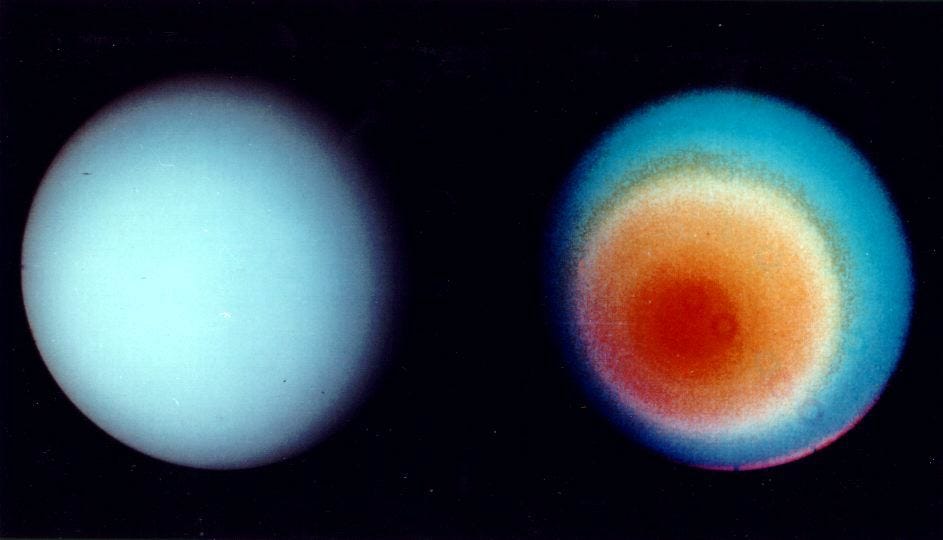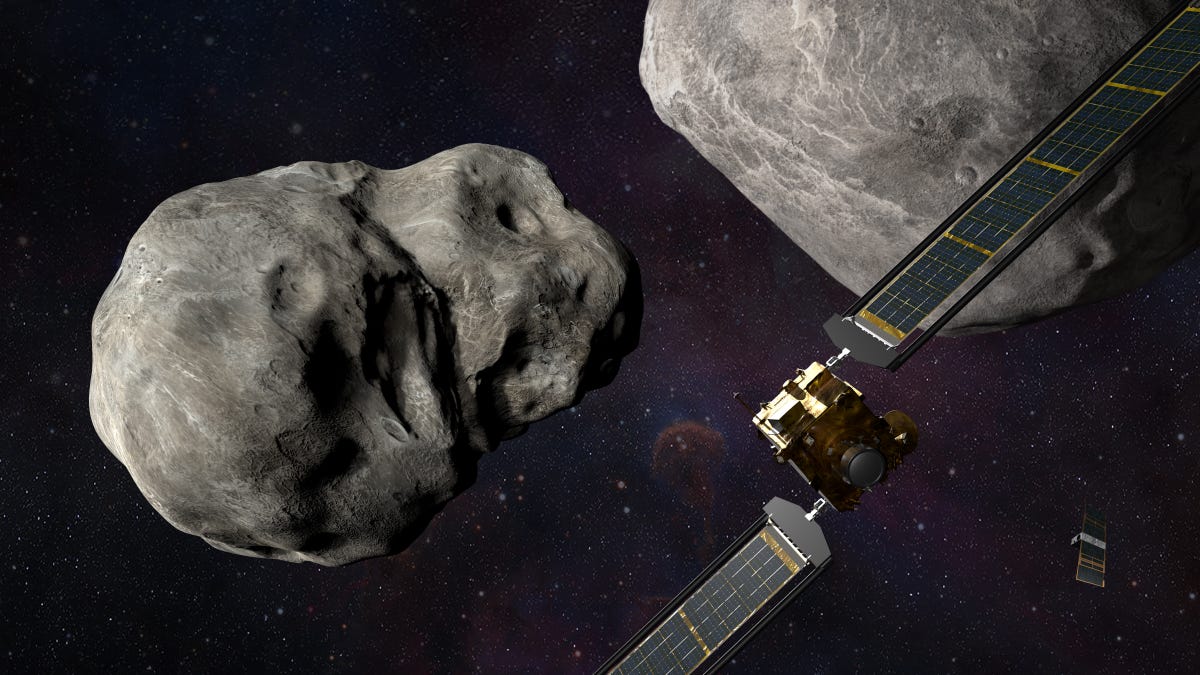Over the next decade, NASA could make transformative discoveries that broaden our understanding of our solar system, using probes to study our solar system’s ice giants and continuing to search for life beyond Earth.
Those two missions — specifically, probing the ice giant Uranus and looking for life on Enceladus, one of Saturn’s moons — should be NASA’s top priorities over the next 10 years, according to a major report from the National Academies of Sciences, Engineering, and Medicine (NAS).
NAS publishes a survey every decade after exhaustive consultation with the wider scientific community, with the goal of influencing NASA’s ambitions and budget priorities. According to NAS this decade, NASA should focus on three high-level scientific themes: origins, worlds and processes, and life and habitability. The report defines 12 priority science questions to help NASA select its missions and research efforts.
“This report sets out an ambitious but practicable vision for advancing the frontiers of planetary science, astrobiology, and planetary defense in the next decade,” Robin Canup, co-chair of the NAS steering committee for the decadal survey, said in a statement.
Some of the greatest gains in knowledge in the next 10 years should be related to the ice giants — the only class of planet in our solar system that hasn’t had a dedicated orbital tour.
Currently, we have a “relative dearth of knowledge of ice giant systems,” Canup said in a briefing Tuesday, “despite the fact they may be the most common form of planets in the universe.”
The Uranus Orbiter and Probe (UOP) should be NASA’s highest priority large mission, the report says. The UOP would conduct a multi-year orbital tour to transform knowledge of ice giants in general, and the Uranian system in particular, through flybys and the delivery of an atmospheric probe.
“Uranus is one of the most intriguing bodies in the solar system,” the report says. “Its low internal energy, active atmospheric dynamics, and complex magnetic field all present major puzzles. A primordial giant impact may have produced the planet’s extreme axial tilt and possibly its rings and satellites, although this is uncertain. Uranus’s large ice-rock moons displayed surprising evidence of geological activity in limited Voyager 2 flyby data, and are potential ocean worlds.”

These images were taken by the Voyager 2 spacecraft during its flyby of Uranus. The images, one true color (left), the other false color (right) were compiled from images taken by the narrow-angle camera and were returned on 17 January 1986.
NASA
Both Uranus and Neptune are “amazing objects” that offer to the opportunity to learn about ice giants, Canup said. However, the report’s authors ultimately said NASA should focus on Uranus. It’s a viable, low-risk mission concept that could rely on currently-available launch vehicles.
“This will be a fantastic multi-year mission with the probe dropping into the planet at the beginning of the mission followed by an extended orbital tour,” Canup said, allowing for further exploration of the Uranus atmosphere, its rings, and more.
The mission is technically ready to start now, but the report recommends it start in 2024. It recommends the mission take advantage of launch opportunities in 2031 and 2032 to utilize a Jupiter gravity assist that would shorten cruise time.
Meanwhile, the report says NASA’s next priority should be the Enceladus Orbilander — a mission to search for evidence of life on Enceladus, the sixth-largest moon of Saturn. The mission would take place from orbit and during a two-year landed mission that would perform detailed studies of fresh plume material coming from Enceladus’ interior ocean.
The emphasis the report puts on this mission reflects the scientific community’s “true desire this decade to make progress not just in studying habitability but in trying to detect whether life exists elsewhere in our solar system,” Canup said.
The comprehensive decadal report evaluates a wide range of other missions, lauding the progress made studying Mars, as well as NASA’s Discovery Program. It also stresses the potential for combining human and robotic exploration in space.
One new area in the report is the focus on planetary defense — the effort to detect and track objects like asteroids that could pose a threat to life on Earth. The report recommends a focus on enhancing near-Earth object (NEO) detection, tracking, and characterization capabilities, as well as the improving NEO modeling and prediction. It also suggests developing technologies for NEO deflection and disruption missions.

The Double Asteroid Redirection Test (DART) will help determine if intentionally crashing a spacecraft into an asteroid is an effective way to change its course.
NASA
The NAS for the first time took a critical look at the state of the profession, urging NASA to ensure that diversity, equity, inclusivity, and accessibility (DEIA) are part of its mission. The report encourages engaging with students from underrepresented communities, helping them move into the fields of planetary science and astrobiology.
“While scientific understanding is the primary motivation for what our community does, we must also work to boldly address issues concerning our community’s most important resource — the people who propel its planetary science and exploration missions,” Philip Christensen, steering committee co-chair, said in a statement. “Ensuring broad access and participation in the field is essential to maximizing scientific excellence and safeguarding the nation’s continued leadership in space exploration.”
The report also urged NASA to increase its budget for Research and Analysis.
“It’s the basic science that translates the results from these missions into an actual increase of knowledge,” Canup said.
NASA’s budget for its planetary science division (PSD) has grown, but support for research and analysis within that division has remained flat. Consequently, the fractional investment in research and analysis has decreased from 15% in 2013 to 8% currently.
That’s a “very intense concern for the program,” Canup said. The report recommends that NASA invest at least 10% of its PSD budget in research and analysis.
Stay connected with us on social media platform for instant update click here to join our Twitter, & Facebook
We are now on Telegram. Click here to join our channel (@TechiUpdate) and stay updated with the latest Technology headlines.
For all the latest Technology News Click Here
For the latest news and updates, follow us on Google News.
